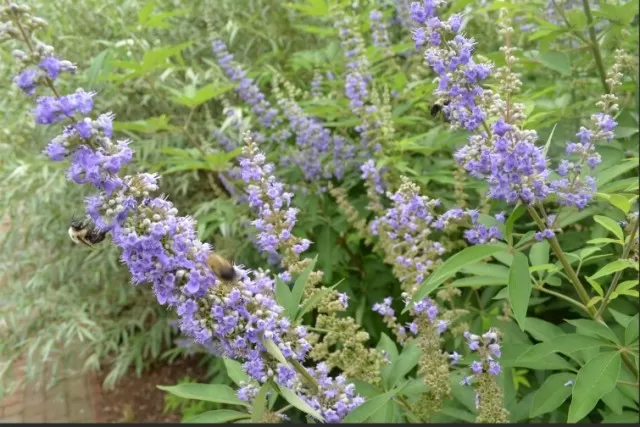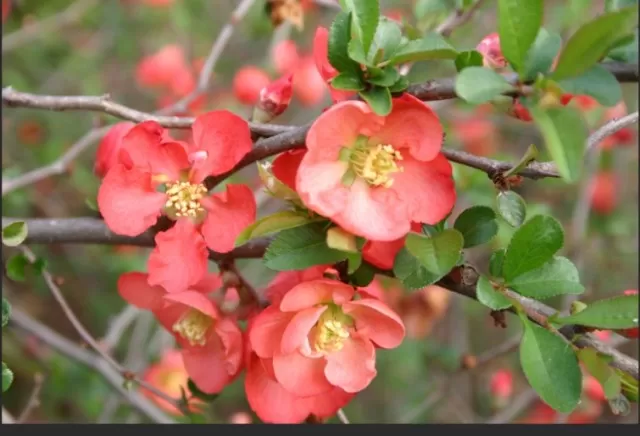Sun-Loving Shrubs: Flourishing in Full Light. Just like the daring spirit of “mad dogs and Englishmen,” these resilient flowering shrubs fearlessly embrace the midday sun.
With their ability to thrive in hot conditions, they add a burst of color and vitality to your outdoor space. As you curate your outdoor space, these flowering shrubs stand as steadfast companions that thrive in the face of midday sun and heat. Their resilience not only adds visual appeal but also showcases the beauty of nature’s adaptability. With these plants, your garden will become a vibrant canvas that flourishes even under the sun’s most intense embrace.
The Enchanting Butterfly Bush (Buddleja spp.): A Magnet for Butterflies and Blooms

The mesmerizing Butterfly Bush, scientifically known as Buddleja spp.
, derives its name from its remarkable ability to allure butterflies with its sweet nectar. These graceful shrubs ascend to heights ranging from 5 to 15 feet, adorning landscapes with clusters of delicately scented petite flowers that span a diverse spectrum of captivating colors.
Delighting both eyes and pollinators, the Butterfly Bush has long been a cherished addition to gardens.
A noteworthy mention lies with the resilient B.
davidii species, renowned for their endurance even in the harsh conditions of USDA Zone 5. These stalwart varieties defy the odds, gracing gardens with their beauty and becoming a haven for fluttering visitors.
However, a shadow of controversy hovers over the Butterfly Bush, casting light on a potential ecological concern.
While it beckons butterflies with open arms, its exuberant growth in certain regions raises alarms as it might outcompete native host plants essential for the survival of butterfly larvae. This intricate dance between attraction and ecological balance highlights the need for conscientious gardening practices.
For those cultivating gardens in more temperate climates where the exuberance of buddlejas could potentially tip the scales, a prudent choice lies in opting for sterile cultivars.
These cultivars, unable to reproduce, offer a compromise between enjoying the captivating beauty of the Butterfly Bush and ensuring the preservation of local ecosystems.
In summary, the Butterfly Bush, a living testament to nature’s marvels, continues to cast its spell on admirers, offering a delightful spectacle of colors and a rendezvous point for butterflies.
By choosing wisely and embracing responsible cultivation, gardeners can harmonize the allure of this enchanting shrub with the ecological balance of their surroundings.
Vibrant Beauty and Resilience: Exploring the World of California Lilacs (Ceanothus spp.)
For those seeking solace in a sun-soaked haven that endures the scorching embrace of summer, the California Lilac, belonging to the Ceanothus genus, emerges as a steadfast companion.
While akin to the more familiar lilacs, these captivating shrubs unveil a unique identity. Their exquisite, sweet-scented clusters of blooms, bedecked in shades of serene blue or delicate white, burst forth with the arrival of spring, imbuing the surroundings with an enchanting aroma.
Diverging from their counterparts, California Lilacs boast an evergreen disposition, gracing the landscape with their lush foliage even in the depths of winter.
These versatile shrubs stand as sentinels of endurance, ranging in stature from modest 1-foot wonders to towering 30-foot marvels. A remarkable trait lies in their ability to brave the harsh embrace of arid summer conditions, a testament to their adaptability and strength.
While many of these resilient beauties thrive as perennials in the warmer embrace of USDA Zone 7 and Beyond, a notable exception emerges in the form of the New Jersey tea (Ceanothus americanus).
This tenacious variety defies the norm, showcasing its vigor in the challenging climes of Zone 3, a true emblem of resilience and vitality.
In the tapestry of nature’s creations, the California Lilac stands as a beacon of vibrant beauty and unwavering strength.
Its sun-kissed blooms and evergreen foliage offer a year-round symphony of colors and textures, while its ability to thrive in diverse conditions exemplifies the harmony between nature and resilience. Whether gracing a tranquil garden or adding life to a sprawling landscape, the California Lilac invites us to embrace the remarkable tale of its existence.
Elegant Simplicity: Discovering the Chaste Tree (Vitex agnus-castus)

The Chaste Tree, scientifically referred to as Vitex agnus-castus, stands as a testament to nature’s artistry, gracing landscapes with its unique character and quiet allure.
While its potential height can soar to an impressive 25 feet in the more temperate southern expanses of its habitat, a different story unfolds in the northern realms. Here, it adopts a more modest demeanor, maintaining a shrubby form that regenerates from the ground up after each winter slumber.
Its stature gracefully extends to a restrained 3 to 5 feet during the burgeoning seasons, creating a harmonious blend of beauty and resilience.
This captivating botanical marvel produces fragrant spikes, each adorned with blossoms of chaste refinement.
These blooms, a symphony of muted elegance, present themselves in shades of pure white, delicate pink, or the more commonly seen pale purple. An enchanting interplay occurs as these floral treasures emerge against a backdrop of silvery foliage, casting an ethereal shimmer throughout the landscape.
Nature’s timing bestows a prolonged spectacle, as the Chaste Tree unfurls its floral tapestry from the heart of summer through the fading hues of autumn.
This captivating display graces the canvas of USDA zones 7 through 11, offering a delicate dance of colors and fragrances that infuse the air with a sense of tranquility and charm.
In gardens both grand and intimate, the Chaste Tree finds its place as a symbol of elegant simplicity.
Its ability to adapt to varying climates and present an ever-changing portrait of beauty adds to its mystique. Whether standing tall as a arboreal masterpiece or maintaining a more modest stature, the Chaste Tree invites us to embrace its enchanting presence and the stories it whispers through its blooms and leaves.
Blooming Splendor: Exploring the Diversity of Shrubby Cinquefoil (Potentilla fruticosa)
Amidst the realm of flowering wonders, the Shrubby Cinquefoil, known scientifically as Potentilla fruticosa, emerges as a radiant gem, casting a spell of enchantment with its resplendent blooms.
Each blossom, a grand canvas of nature’s artistry, measures 1½ to 2 inches, resembling the magnificence of oversized strawberry flowers. This captivating spectacle unfolds in a myriad of hues, ranging from the purest whites to the gentlest pinks, the sunniest yellows, and the warmest oranges. .
The world of shrubby cinquefoil cultivars spans a diverse spectrum of heights, encompassing varieties that gracefully stretch from 2 feet to over 4 feet.
This rich tapestry of sizes adds to the allure of these botanical treasures, allowing them to find their perfect place in gardens both grand and intimate.
While the shrubby cinquefoil proves itself as a resilient companion in a range of climates, its hardiness exhibits variation according to the unique attributes of each cultivar.
Across the canvas of USDA zones 2 through 9, this blossoming wonder weaves its magic, enriching landscapes with its vibrant presence.
In the northern zones, these splendid shrubs revel in the embrace of full sun, basking in the nourishing rays that fuel their growth and bloom.
Yet, as one journeys southward, a careful balance must be struck, for the intensity of the sun can fade the vivid hues of their blossoms. A whispered piece of wisdom for gardeners in these sun-soaked realms: consider the embrace of morning sunlight and afternoon shade, an artful compromise that ensures the continued brilliance of their cinquefoil display.
The Shrubby Cinquefoil beckons us into a realm of blooming splendor, where colors converge and petals unfold like stories waiting to be told.
Its diversity in form and resilience in varying conditions remind us of nature’s endless capacity to captivate and inspire. As we welcome these radiant blooms into our gardens, we become witnesses to the ever-changing masterpiece of the natural world.
Vibrant Awakening: Embracing the Radiance of Flowering Quince (Chaenomeles spp.)

As the tapestry of nature awakens from its slumber, there emerges a resplendent herald of spring – the Flowering Quince, known in the botanical realm as Chaenomeles spp.
With an exuberant burst of color, these sun-seeking bushes ignite the landscape with their early bloom, earning the affectionate moniker of “fire bushes. ” Their vibrant display, reminiscent of flickering flames, is most commonly adorned with single blossoms of striking orange or deep red, spanning a graceful 1½ to 2½ inches.
Adding to their fiery allure, the nascent leaves boast a ruddy tinge, painting a scene of nature’s grandeur in transition.
Yet, the tale of the Flowering Quince is one of diversity, as its blooms weave an intricate symphony of shades.
The palette extends to encompass pristine whites, delicate pinks, and even charming double versions, an offering that spans the canvas of USDA zones 5 through 10. Across this expansive range, the Flowering Quince paints its masterpiece, an ode to the changing seasons and the splendor they bring.
Rising from the earth with a modest grace, the Flowering Quince embraces heights that vary between 3 and 10 feet, adding a vertical dimension to its blooming spectacle.
Occasionally, these enchanting shrubs bear small fruits, a reminder of their botanical lineage. However, it’s worth noting that they stand distinct from the quince fruit tree, belonging to a different branch of the arboreal family.
As we welcome the Flowering Quince into our gardens and hearts, we become witnesses to the first act of nature’s grand performance.
Its blooms, a radiant expression of life’s resilience and beauty, remind us of the cyclical dance between seasons. Through the fiery blaze of its blossoms and the gentle unfurling of its leaves, the Flowering Quince invites us to embrace the artistry of nature and celebrate the vibrant awakening that defines each new spring.
*The information is for reference only.